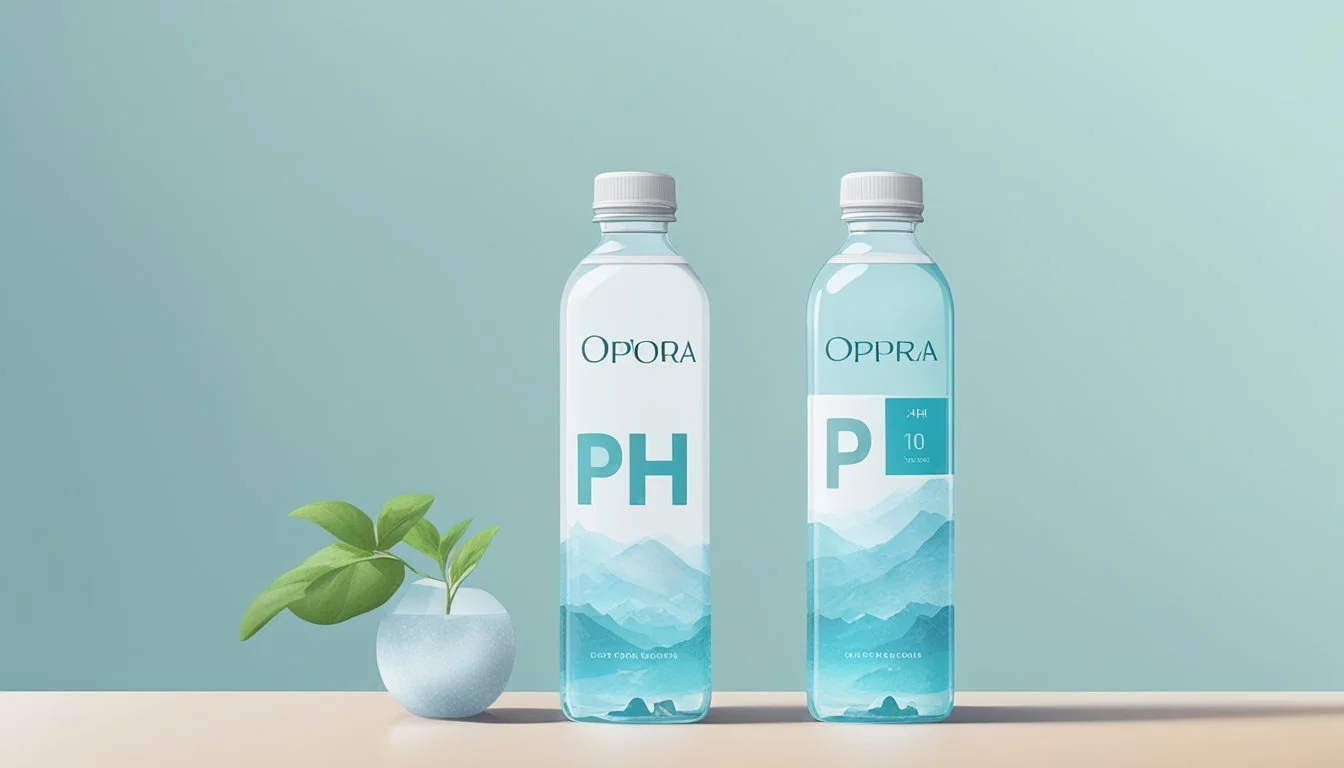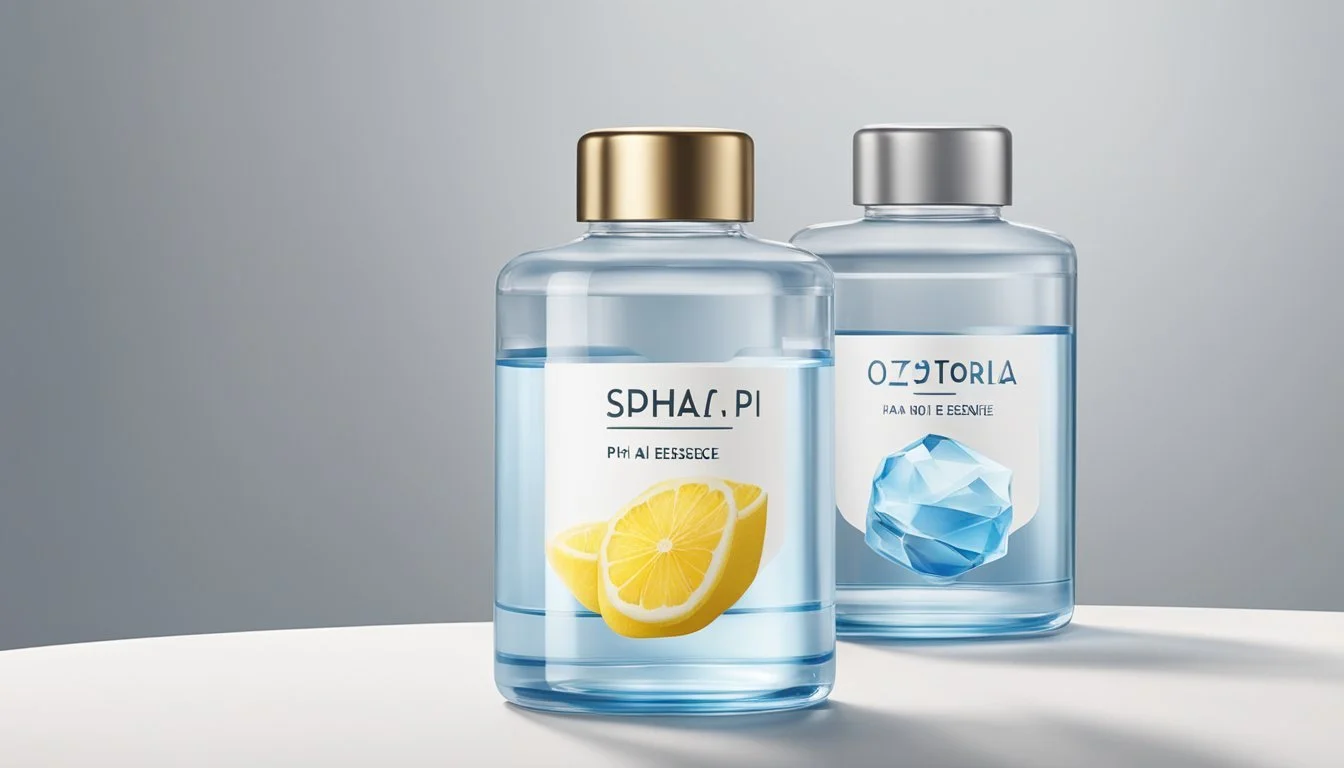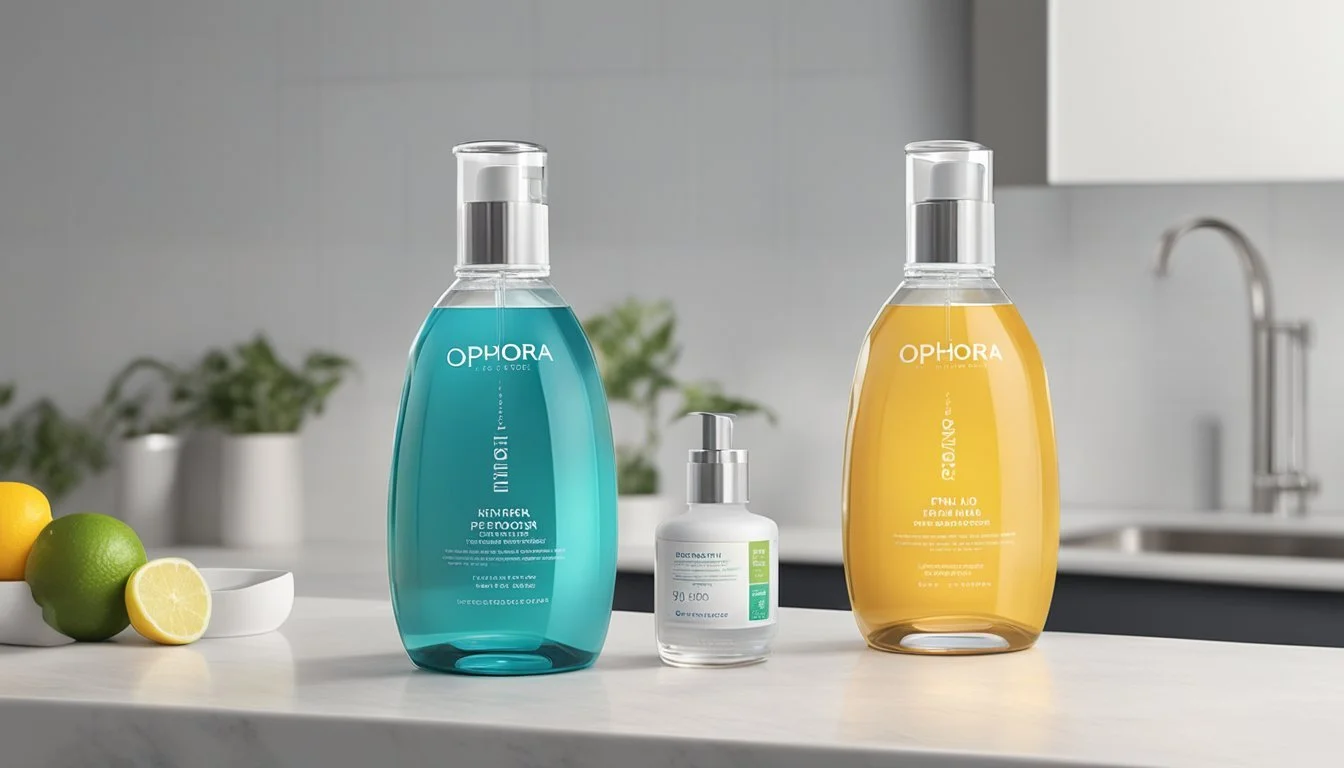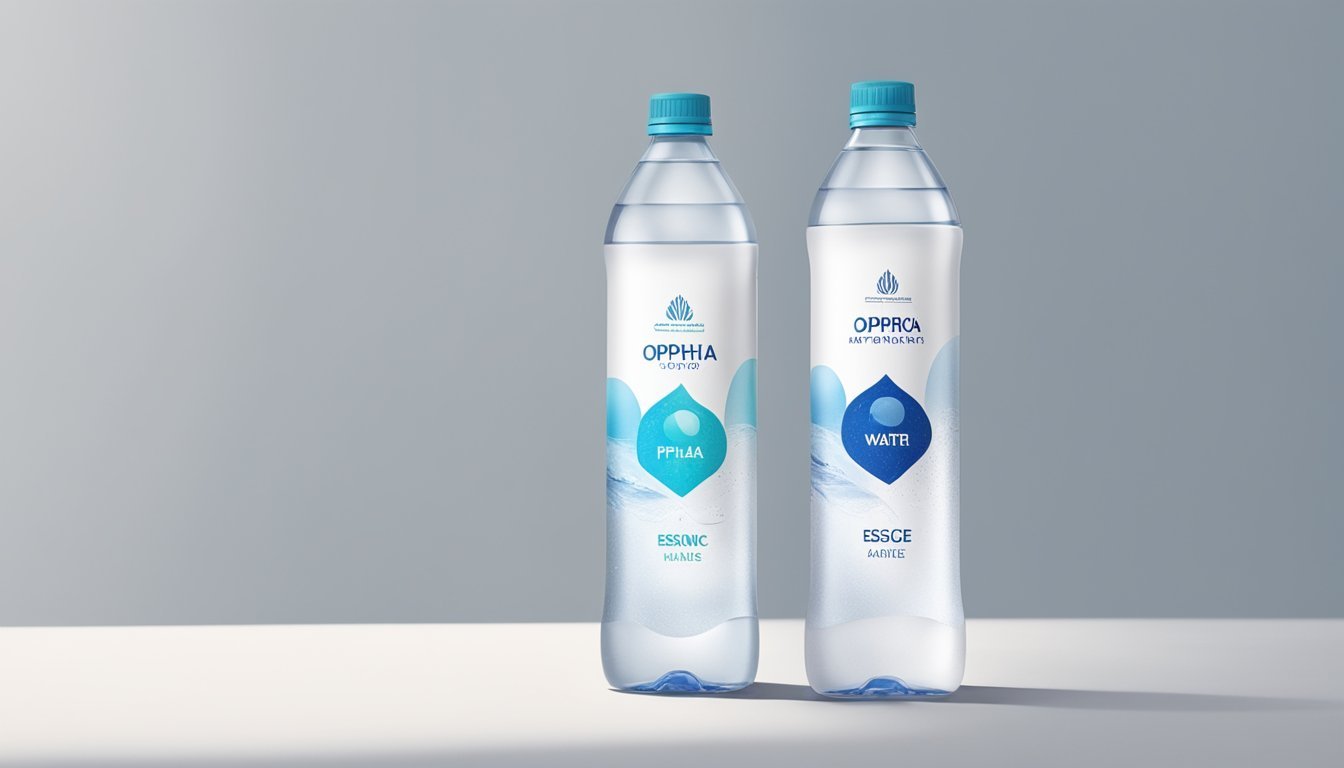Ophora vs. Essence pH10
Comparing Premium Bottled Waters
When it comes to choosing premium bottled water, two brands often rise to the top: Ophora and Essence pH10. Both claim to offer superior hydration with added health benefits, but how do they actually stack up against each other? Essence pH10 boasts micro-filtration, reverse osmosis, and ionization to achieve water with a pH of 9.5 or higher. On the other hand, Ophora offers ultra-purified water that not only matches high pH levels but also incorporates oxygen to enhance absorption.
Bottled water enthusiasts scrutinize factors like taste, filtration process, and mineral content when selecting their go-to brands. Essence pH10's meticulous filtration and electrolyte infusion makes it a favorite for those prioritizing purity and pH balance. In contrast, Ophora’s unique selling point lies in its oxygen-enrichment, which proponents say improves hydration efficiency.
For those looking for the best combination of pH balance and hydration efficiency, Ophora marginally edges out Essence pH10 due to its innovative oxygenation process. Nevertheless, both brands surpass standard tap water and many bottled water competitors in delivering top-tier drinking water. Readers will find that whether you choose Ophora or Essence pH10 largely depends on personal preference and specific health requirements.
Understanding pH in Drinking Water
Maintaining the right pH balance in drinking water is crucial for both taste and health. Key points include the role of pH in water quality, the pH levels found in popular bottled water brands, and the health implications of consuming water that is either too acidic or too alkaline.
The Role of pH in Water Quality
The pH level, or potential of hydrogen, measures how acidic or alkaline a substance is on a scale from 0 to 14. This scale determines water quality, affecting its taste and safety.
A balanced pH, typically between 6.5 and 8.5, ensures that the water is neither too acidic nor too alkaline. This balance helps in maintaining the natural pH levels of the human body. Water with a pH below 6.5 is considered acidic and can lead to erosion of pipes and metallic taste. Conversely, water above 8.5 is alkaline and can feel slippery or soapy.
pH Levels in Bottled Water Brands
Various bottled water brands offer different pH levels, aiming to appeal to consumer preferences and health considerations. Most brands maintain a pH range of 6.5 to 8.5, with some like Waiakea reaching up to 8.2 due to its volcanic source, making it naturally alkaline.
Bottled water with a pH outside the typical range is less common but worth noting. For example, some brands might dip below 6.0 or exceed 9.0, which can affect both the taste and potential health impacts.
Health Implications of Acidic vs. Alkaline Water
Drinking water's pH level has significant health implications. Acidic water (pH below 6.5) can contribute to the erosion of tooth enamel and digestive issues, altering the body's natural pH balance. Acidic water might also possess a metallic or sour taste, making it less pleasant to drink regularly.
Alkaline water, with a pH above 7.5, may offer certain health benefits like improved hydration and acid-neutralizing properties. However, excessively alkaline water can interfere with digestion and nutrient absorption. A balance within the optimal pH range is therefore recommended to ensure safety and enjoyment.
Understanding these aspects helps consumers make informed choices regarding their preferred bottled water brands and their health.
Comparing Ophora and Essence pH10
Ophora and Essence pH10 are two leading brands in the bottled water market, each offering unique qualities through their purification and enhancement processes, as well as distinct taste profiles. This section will compare their brand profiles, water sources, purification processes, and the taste and texture of both waters.
Brand Profiles and Water Source
Ophora is known for its cutting-edge technology and hyper-oxygenated water. It sources water from various locations, ensuring over 30,000 contaminants are removed.
Essence pH10, on the other hand, focuses on consistent and high pH alkaline water. It uses natural spring water, micro-filtered, and bottled at the source to maintain purity.
Both brands emphasize the purity and mineral content of their water, but their unique sourcing and profile give them distinct characteristics.
Purification and Enhancement Processes
Ophora uses advanced filtration methods that include nano-pure® technology and hyper-oxygenation. This process ensures the water is ultra-purified and rich in oxygen, balancing the pH and adding essential minerals.
Essence pH10 employs a Hydro-7 purification process. This incorporates micro-filtration, reverse osmosis, and ultraviolet exposure. The water is then ionized and infused with electrolytes, resulting in a high pH of 9.5 or more, aimed at providing superior hydration.
Both brands prioritize removing impurities and adding health-benefiting electrolytes and minerals, but they take divergent paths to achieve this.
Taste and Texture Differentials
Ophora water is often noted for its clean, refreshing taste. The hyper-oxygenation process contributes to a smooth texture that leaves a fresh aftertaste.
Essence pH10 has a slightly tangy tinge due to its high alkaline content but is generally praised for its crisp and pure taste. The presence of electrolytes enhances the hydration experience, making it a favorite among those who prefer alkaline water.
In comparing texture, Ophora is velvety and light, whereas Essence pH10 offers a crisper, slightly more mineral-rich experience. Both waters stand out in their unique taste profiles tailored to different preferences.
Water Quality and Health Benefits
When comparing Ophora and Essence pH10 bottled waters, evaluating their water quality and associated health benefits is crucial. This helps consumers make an informed decision about which product aligns best with their needs.
Hydration and Mineral Content
Hydration is vital to overall well-being, and both Ophora and Essence pH10 provide excellent hydration properties.
Ophora is known for its oxygen-enriched water, which may enhance aerobic capacity and recovery. In terms of mineral content, Ophora contains essential minerals such as calcium, magnesium, and potassium. These minerals contribute to better bone health, muscle function, and overall electrolyte balance.
Similarly, Essence pH10 is praised for its high pH levels, typically around 10. This alkaline nature is believed to aid in reducing acidity in the body. Like Ophora, Essence also contains important minerals, making it a great option for daily hydration needs.
Water Safety and Contaminant Levels
Ensuring water safety and low contaminant levels is fundamental when selecting bottled water.
Ophora employs advanced purification techniques that eliminate a broad spectrum of contaminants, including lead and other heavy metals. This ensures the water remains safe for consumption without undesirable chemicals or toxic substances.
Essence pH10 similarly undergoes rigorous filtration processes, including micro-filtration and reverse osmosis. These processes are effective in removing contaminants, ensuring the water is as pure as possible. Consequently, both brands uphold high safety standards, making them reliable choices for health-conscious consumers.
Health Advantages of Enhanced Water
Both Ophora and Essence pH10 offer specific health advantages due to their enhanced properties.
Ophora’s oxygen-rich composition is said to improve physical performance and recovery, potentially benefiting athletes and active individuals. The presence of minerals like calcium, magnesium, and potassium not only supports hydration but also plays a role in maintaining healthy bodily functions.
On the other hand, Essence pH10, with its high alkaline pH, may help neutralize body acidity. Some users claim this leads to better digestive health and faster recovery times after strenuous activities. Additionally, the infusion of electrolytes in both waters ensures optimal hydration and performance.
Tables summarizing mineral content and filtration techniques can further aid in comparing these two brands:
| Mineral | Ophora | Essence pH10 |
|------------------|-----------------|-----------------|
| Calcium | Yes | Yes |
| Magnesium | Yes | Yes |
| Potassium | Yes | Yes |
| Purification Technique | Ophora | Essence pH10 |
|------------------------|-----------------|-----------------|
| Micro-filtration | No | Yes |
| Reverse Osmosis | No | Yes |
| Oxygenation | Yes | No |
By focusing on these aspects, the reader can better understand the distinct qualities and benefits of both Ophora and Essence pH10.
Environmental Impact and Sustainability
This segment covers the environmental impact of Ophora and Essence pH10 bottled water, with a focus on the bottling processes and the use of plastics, as well as eco-friendly alternatives and packaging.
Bottling Processes and Plastic Use
Both Ophora and Essence pH10 utilize plastic bottles in their packaging, which contributes significantly to the global plastic waste problem. Plastic bottles are generally non-biodegradable and can take hundreds of years to decompose. They often end up in landfills or oceans, causing environmental harm.
Manufacturing plastic bottles also consumes substantial energy and water resources. For every 50 oz of bottled water produced, between 1.6 and 22 oz of CO2 are released into the atmosphere. This carbon footprint is considerably higher compared to that of tap water. Additionally, BPA (bisphenol A), a chemical found in some plastic bottles, has been identified as a potential health risk.
Eco-Friendly Alternatives and Packaging
To mitigate the environmental impact, some bottled water companies are exploring eco-friendly alternatives. Cardboard cartons and glass bottles are more sustainable choices compared to plastic. Boxed water brands, for instance, emphasize recyclable and biodegradable packaging materials.
Packaging innovations also include the use of recycled plastics and biodegradable materials. Some companies focus on reducing the bottle weight, which in turn lowers the carbon footprint. While boxed water options and the use of recycled materials represent positive steps, it's crucial for consumers to consider the life-cycle environmental impact when choosing bottled water options.
Consumer Considerations
When choosing between Ophora and Essence pH10, consumers often weigh factors such as flavor and cost. Both brands cater to specific preferences and usage scenarios, with differing price points affecting perceived value.
Flavor Preferences and Usage Occasions
The taste of bottled water can vary significantly between brands. Ophora offers a crisp flavor, making it a popular choice for those who prefer a clean, fresh profile. Essence pH10 has a slight mineral taste due to its alkaline properties, appealing to those who enjoy a more distinctive flavor.
Usage occasions also matter. Ophora's smooth taste is often preferred for general hydration needs and daily drinking. For those engaging in rigorous workouts, Essence pH10's electrolyte content may be more beneficial, providing added hydration support.
Price Comparison and Value for Money
Price determines the perceived value for many consumers. Ophora is positioned at a higher price point, justified by its unique purification process and premium taste. Essence pH10, while still premium, often falls into a slightly lower price range, appealing to budget-conscious consumers.
Value considerations include the benefits each provides. Ophora's pricing aligns with its branding as a luxury product, whereas Essence pH10 offers balanced hydration needs at a more accessible price. Both deliver quality, but each caters to different financial priorities and usage scenarios.
Analysis and Comparison of pH and Alkalinity
When choosing between Ophora and Essence pH10 bottled water, understanding their pH levels and alkaline properties is crucial. Below, we explore methods for measuring pH and the unique alkaline characteristics and ionization processes of each brand.
Methods for Measuring pH
pH levels of bottled water can be measured using various methods, including pH indicator paper and colorimetric indicators. These tools change color based on the acidity or alkalinity of the water.
pH indicator paper is dipped into the water sample and the resulting color is compared to a pH scale chart. This method is simple but not as precise as others.
Colorimetric indicators involve adding a reagent to the water and observing the color change. This approach tends to be more accurate and can be quantified using a colorimeter or spectrophotometer.
For a precise measurement of Ophora and Essence pH10, laboratory-grade meters might be employed. These devices measure the electricity between electrodes in the water and are highly recommended for detailed analysis.
Alkaline Properties and Ionization
Ophora water is known for its high pH and alkaline properties. It is micro-filtered and infused with oxygen and minerals that contribute to its ionization process. This rigorous approach ensures consistency in its alkalinity, catering to those who prefer a higher pH.
Essence pH10 also stands out for its ionized water. The brand uses micro-filtering, reverse osmosis, and ultraviolet exposure to achieve 99.9% purity before infusing electrolytes. The pH level of 9.5 or higher highlights its significant alkalinity and consistency.
Both brands produce water with alkaline properties that potentially offer health benefits like better hydration and improved acid-base balance. The key differences lie in their ionization methods and mineral content, which can subtly influence taste and overall preference.
More About Ophora
Mountain Valley Spring Water vs Ophora: Which Bottled Water is Better?
Ophora vs Kirkland Signature: Which Bottled Water is Better?
Richard's Rainwater vs Ophora: Which Bottled Water is Better?
Whole Foods Italian Still Mineral water vs Ophora: Which Bottled Water is Better?
More About Essence pH10
Aqua Carpatica vs Essence pH10: Which Bottled Water is Better?
Cascade Mountain vs Essence pH10: Which Bottled Water is Better?
Core Hydration vs Essence pH10: Which Bottled Water is Better?
Crystal Geyser vs Essence pH10: Which Bottled Water is Better?
Crystal Lake vs Essence pH10: Which Bottled Water is Better?
Hawaii Volcanic vs Essence pH10: Which Bottled Water is Better?
Hawaiian Springs vs Essence pH10: Which Bottled Water is Better?
Ice Mountain vs Essence pH10: Which Bottled Water is Better?
Icelandic Glacial vs Essence pH10: Which Bottled Water is Better?
Kirkland Signature vs Essence pH10: Which Bottled Water is Better?
Liquid Death vs Essence pH10: Which Bottled Water is Better?
Mountain Valley Spring Water vs Essence pH10: Which Bottled Water is Better?
Nestle Pure Life vs Essence pH10: Which Bottled Water is Better?
Poland Spring vs Essence pH10: Which Bottled Water is Better?
Proud Source vs Essence pH10: Which Bottled Water is Better?
Purely Sedona vs Essence pH10: Which Bottled Water is Better?
Richard's Rainwater vs Essence pH10: Which Bottled Water is Better?
San Pellegrino vs Essence pH10: Which Bottled Water is Better?
Simple Truth vs Essence pH10: Which Bottled Water is Better?
Solan de Cabras vs Essence pH10: Which Bottled Water is Better?
Talking Rain AQA vs Essence pH10: Which Bottled Water is Better?
Whole Foods 365 vs Essence pH10: Which Bottled Water is Better?
Whole Foods Italian Still Mineral water vs Essence pH10: Which Bottled Water is Better?






